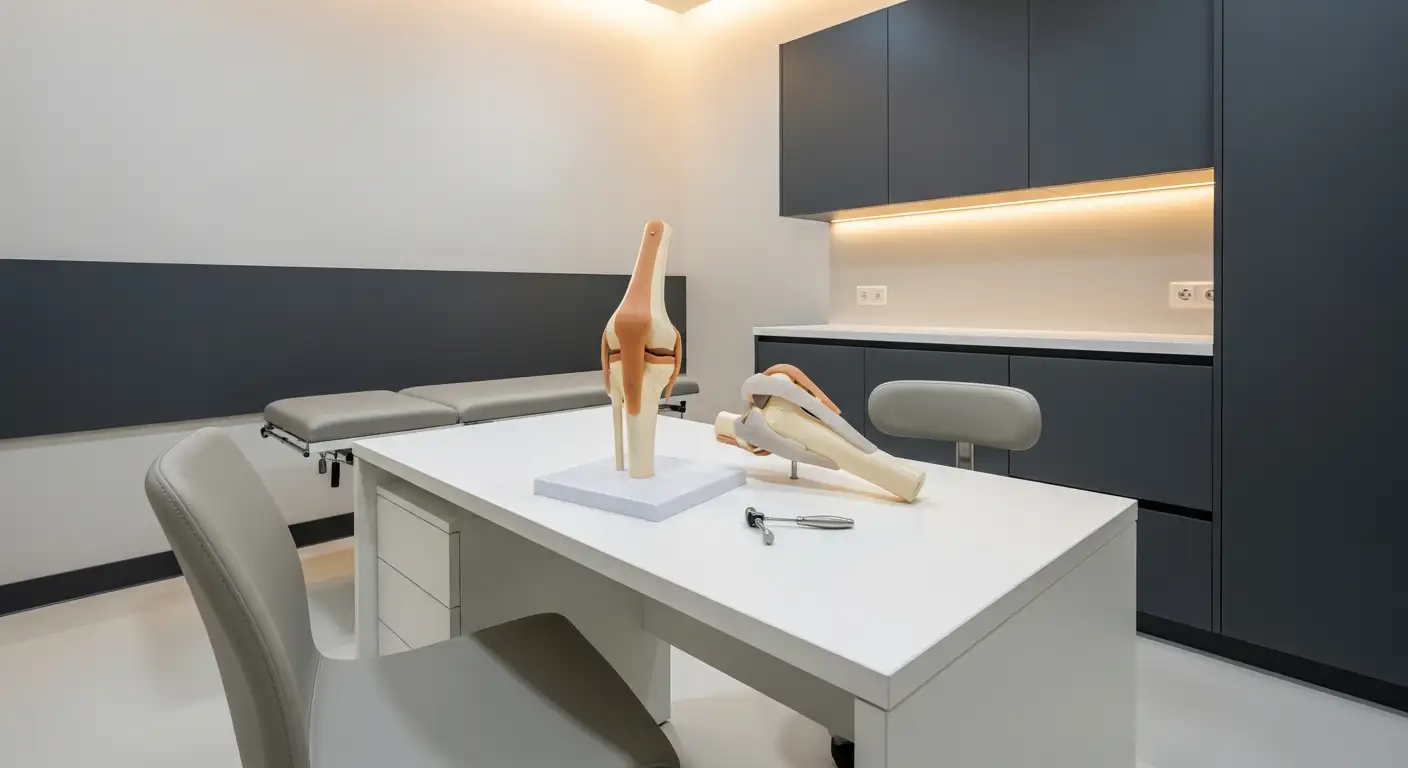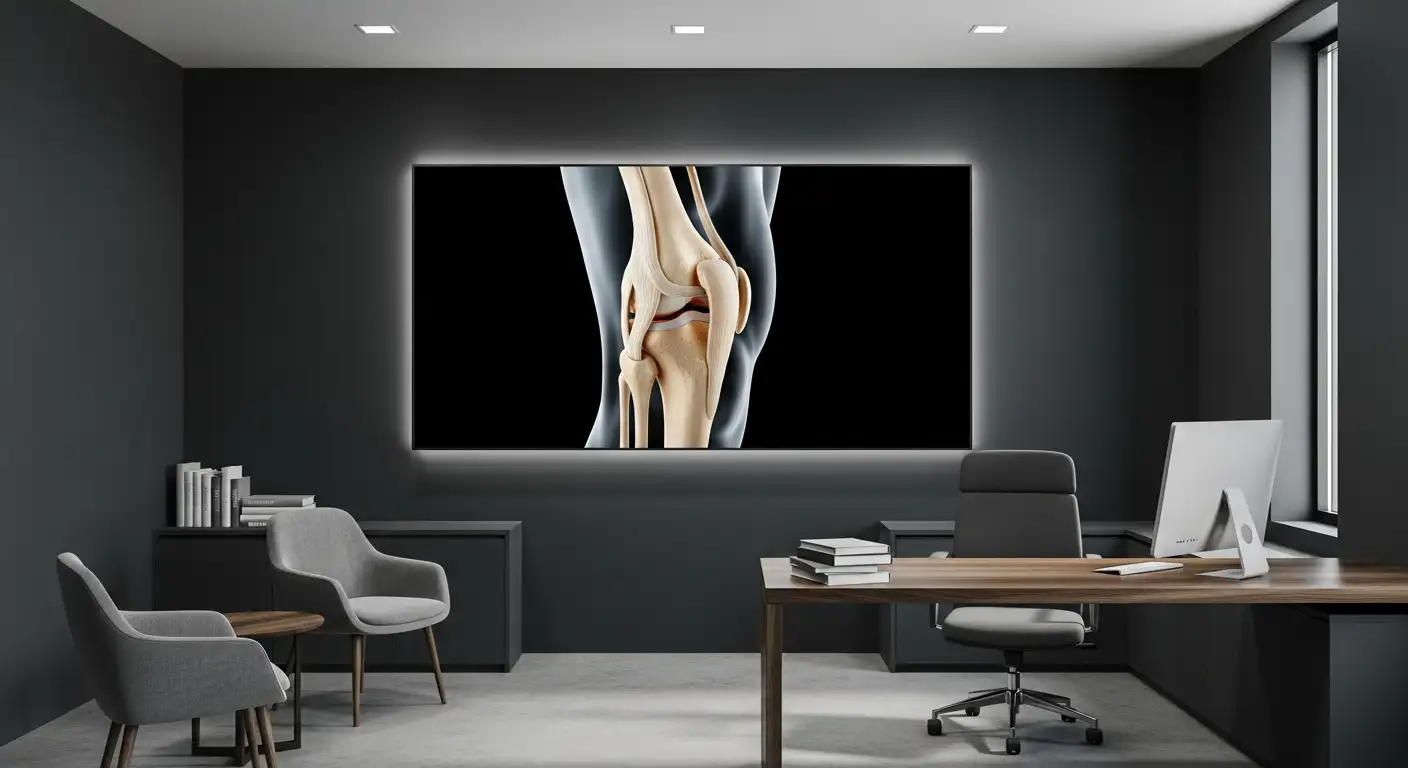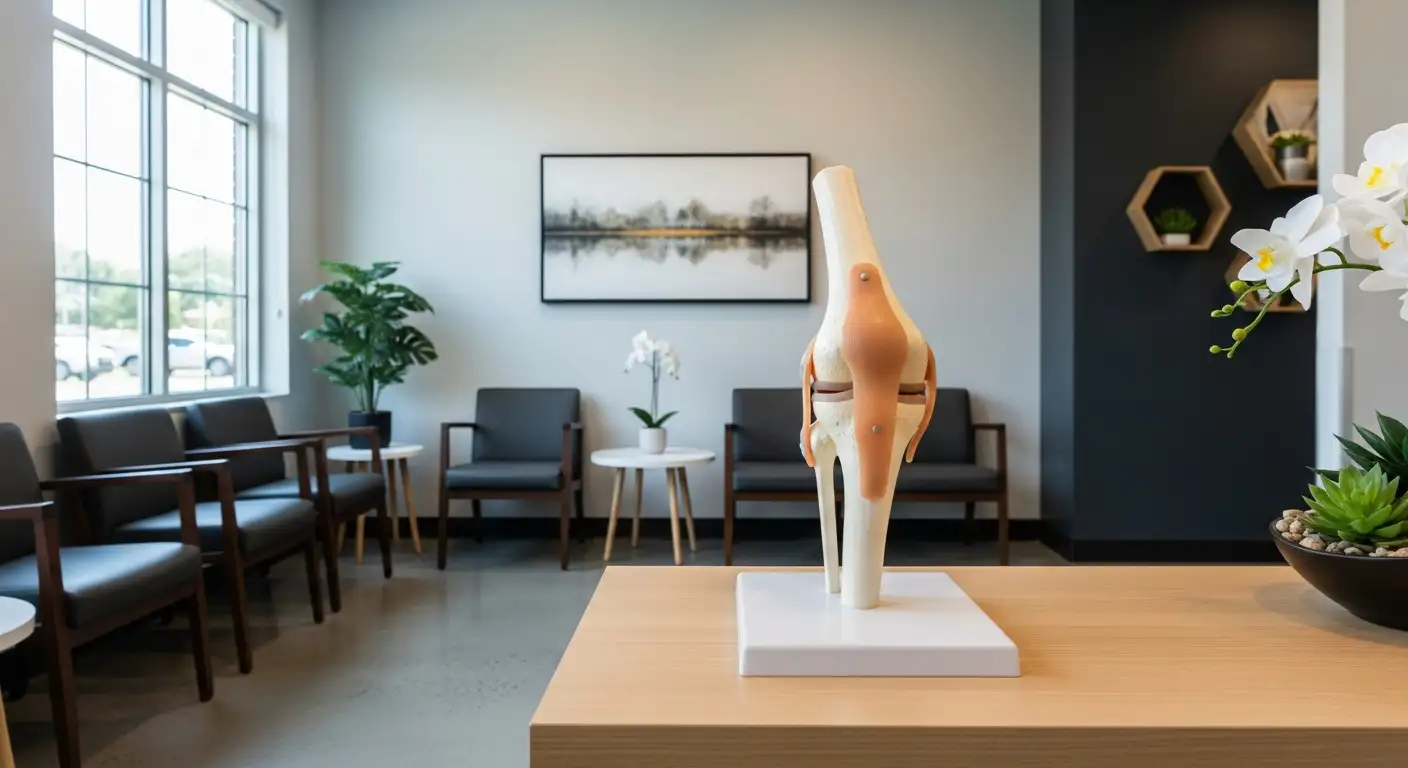Understanding Knee Popping and Pain
Knee popping and pain when bending can be concerning, but it's important to understand the causes and when to seek medical advice. While knee popping is often harmless and does not require medical attention, it can sometimes be a sign of an underlying health condition [1]. Let's delve into the causes of knee popping when bending and when it's necessary to consult a healthcare professional.

What Causes Knee Popping When Bending?
Research has shown that the sound of knee popping originates from the soft tissues around the joint, such as the tendons or ligaments moving over bony structures or the meniscus shifting [1]. In some cases, knee popping can be a result of fluid in the knee, which may be due to an injury, overuse, or an underlying condition such as arthritis. However, the specific cause of knee popping can vary from person to person.
When to Seek Medical Advice for Knee Popping and Pain
While knee popping is often harmless, it's important to be aware of certain symptoms that may indicate the need for medical advice. Consult a healthcare professional if knee popping is accompanied by the following symptoms:
- Pain
- Swelling
- Redness
- Instability or a feeling of the knee giving way
Seeking medical advice is crucial to determine the underlying cause of knee popping and pain. A healthcare professional will be able to conduct a thorough evaluation, provide an accurate diagnosis, and recommend appropriate treatment options if necessary.
Understanding the causes and knowing when to seek medical advice for knee popping and pain when bending is essential for managing and addressing any potential underlying issues. It's always better to err on the side of caution and consult a healthcare professional for a proper evaluation.
Common Causes of Knee Popping and Pain
Knee popping and pain when bending can be attributed to various underlying causes. Understanding these common causes is essential for identifying the appropriate treatment and management strategies. The following are some prevalent conditions associated with knee popping and pain:
Patellofemoral Pain Syndrome
One common cause of knee popping during activities like squatting, going down stairs, or getting up from a chair is patellofemoral pain syndrome. This condition occurs when the kneecap moves awkwardly over the front of the thigh bone as the knee bends and straightens. It can result from factors such as muscle imbalances, overuse, or injury. Individuals with patellofemoral pain syndrome may experience knee pain, a grinding sensation, and occasional swelling [3].
Meniscus Tears
Meniscus tears can also lead to knee popping and pain when bending. These tears can occur due to acute injuries or degenerative changes in the knee joint. The meniscus is a C-shaped cartilage that acts as a shock absorber between the thighbone and shinbone. When this cartilage is torn, individuals may experience knee pain, swelling, stiffness, and a reduced range of motion. Treatment for meniscus tears depends on the severity and location of the tear, and it may involve conservative measures or surgical intervention.
Cartilage Injuries
Injuries to the cartilage in the knee can also cause knee popping when bending. Damage to the articular cartilage or chondromalacia patellae may result from repetitive stress, traumatic injuries, or wear-and-tear over time. These injuries are associated with pain, swelling, and a sensation of catching or locking in the knee. Treatment options for cartilage injuries depend on the severity and location of the damage but may involve physical therapy, medication, or in some cases, surgery [3].
Osteoarthritis
Osteoarthritis, a degenerative joint disease, can manifest as knee popping and pain with movement. This condition occurs when the cartilage covering the ends of bones breaks down, leading to joint inflammation, pain, stiffness, and reduced mobility. Knee osteoarthritis often causes symptoms such as knee popping, grinding sensations, and difficulty bending or straightening the knee. Treatment for osteoarthritis aims to manage symptoms, reduce pain, and improve functionality through a combination of lifestyle modifications, physical therapy, medications, and, in severe cases, surgical interventions [3].
By understanding the common causes of knee popping and pain, individuals experiencing these symptoms can seek appropriate medical attention and explore suitable treatment options. It is important to consult a healthcare professional for an accurate diagnosis and personalized treatment plan based on the specific underlying cause of the knee popping and pain.
Treating Knee Popping and Pain
When experiencing knee popping and pain, it's important to seek appropriate treatment to alleviate discomfort and address any underlying issues. The treatment options can vary depending on the severity and cause of the symptoms. In many cases, nonsurgical treatments are effective, while surgical interventions may be necessary for more severe or persistent cases.
Nonsurgical Treatment Options
For individuals with knee popping and pain, nonsurgical treatments are often the first line of defense. These options aim to reduce pain, improve mobility, and strengthen the knee joint. Here are some common nonsurgical treatment approaches:
- Physical Therapy: Physical therapy can help strengthen the muscles around the knee, improve flexibility, and correct any imbalances that may contribute to knee popping and pain. A physical therapist can create a personalized exercise program to target specific areas of concern.
- Pain Management: Over-the-counter pain relievers, such as nonsteroidal anti-inflammatory drugs (NSAIDs), can help manage the discomfort caused by knee popping when bending. However, it's important to follow the recommended dosage and consult a healthcare professional if the pain persists.
- RICE Method: The RICE method (Rest, Ice, Compression, Elevation) can be effective in reducing knee pain and swelling. Resting the knee, applying ice packs, using compression bandages, and elevating the leg can help alleviate symptoms and promote healing.
- Assistive Devices: In some cases, using assistive devices such as braces, crutches, or orthotics can provide support and stability to the knee joint, reducing pain and minimizing further damage.
Surgical Interventions
In more severe or persistent cases of knee popping and pain, surgical interventions may be necessary. Surgery aims to address the underlying cause of the symptoms and restore proper knee function. The specific surgical procedure will depend on the diagnosis and individual circumstances. Some common surgical interventions include:
- Arthroscopy: Arthroscopy is a minimally invasive procedure that involves inserting a small camera and surgical instruments into the knee joint. It allows the surgeon to visualize and repair certain knee conditions, such as meniscus tears, cartilage injuries, and patellofemoral pain syndrome.
- Partial or Total Knee Replacement: In cases of severe knee damage or advanced osteoarthritis, partial or total knee replacement surgery may be recommended. This involves removing damaged portions of the knee joint and replacing them with artificial implants to restore function and alleviate pain.
It's important to note that the decision to undergo surgery should be made in consultation with a healthcare professional, taking into consideration the individual's specific condition, lifestyle, and goals. Post-surgical rehabilitation and physical therapy are typically recommended to optimize recovery and regain strength and mobility in the knee.
By seeking appropriate treatment, individuals experiencing knee popping and pain can find relief and improve their overall knee health. Whether through nonsurgical methods or surgical interventions, the goal is to reduce discomfort, restore function, and enhance quality of life. Remember to consult with a healthcare professional for an accurate diagnosis and personalized treatment plan based on your specific needs.
Preventing Knee Popping and Pain
When it comes to preventing knee popping and pain when bending, there are various strategies and techniques that can help maintain knee health. By incorporating strengthening exercises, practicing proper techniques for bending and squatting, and engaging in low-impact activities, you can reduce the risk of knee discomfort and popping.
Strengthening Exercises
Strengthening the muscles around the knee is crucial for providing stability and support. Strong muscles can help alleviate stress on the knee joint, reducing the likelihood of pain and popping. Some effective exercises to strengthen the knee muscles include:
- Quadriceps exercises: Straight leg raises, squats, and leg extensions.
- Hamstring exercises: Hamstring curls, lunges, and deadlifts.
- Calf exercises: Calf raises and standing heel raises.
- Glute exercises: Bridges, hip thrusts, and clamshells.
These exercises should be performed under the guidance of a healthcare professional or a qualified fitness trainer to ensure proper form and minimize the risk of injury. Gradually increase the intensity and repetitions of the exercises as your strength improves.
Proper Techniques for Bending and Squatting
Using proper techniques while bending or squatting can help reduce strain on the knees and minimize discomfort. Here are some guidelines to keep in mind:
- Align your body properly: Maintain an upright posture, with your shoulders back and your core engaged. Avoid leaning forward excessively, as it can place additional stress on the knees.
- Bend your knees and hips: When bending or squatting, initiate the movement by bending your knees and hips simultaneously. Keep your knees aligned with your toes and avoid letting them collapse inward.
- Use your leg muscles: Engage your leg muscles, particularly the quadriceps and glutes, to provide support and stability as you bend or squat.
- Avoid sudden or jerky movements: Perform movements in a controlled and smooth manner to minimize stress on the knee joints.
By practicing proper techniques for bending and squatting, you can reduce the strain on your knees and mitigate the risk of knee popping and pain.
Low-Impact Activities for Knee Health
Engaging in low-impact activities can be beneficial for maintaining knee health and reducing the likelihood of knee pain and popping. These activities provide cardiovascular benefits without placing excessive stress on the knees. Consider incorporating the following low-impact exercises into your routine:
- Swimming or water aerobics: The buoyancy of water reduces the impact on the knees while providing a full-body workout.
- Cycling: Riding a stationary bike or cycling outdoors is a low-impact exercise that helps strengthen the muscles around the knee joint.
- Elliptical training: The elliptical machine provides a low-impact alternative to running or jogging, promoting cardiovascular fitness without excessive stress on the knees.
- Walking: Walking is a simple and accessible low-impact activity that can be done outdoors or on a treadmill.
Before starting any new exercise program, it's important to consult with a healthcare professional or a certified fitness trainer, especially if you have pre-existing knee conditions or concerns.
By incorporating strengthening exercises, practicing proper bending and squatting techniques, and engaging in low-impact activities, you can take proactive steps to prevent knee popping and pain when bending. Remember to listen to your body, start slowly, and gradually increase the intensity of your exercises to avoid overexertion or injury.
When to Consult a Doctor
While occasional knee popping and pain when bending may not always be a cause for concern, there are certain circumstances where it is advisable to consult a doctor. It's important to remember that persistent or worsening symptoms should not be ignored, as they could be indicative of a more serious underlying problem. Here are some situations where seeking medical advice is recommended:
Persistent or Worsening Symptoms
If knee popping and pain persist or worsen over time, it is crucial to consult a doctor. This may indicate an underlying condition that requires further investigation and appropriate treatment. Ignoring persistent symptoms can potentially lead to further damage or complications [1].
Signs of Ligament or Meniscus Issues
If knee popping is accompanied by symptoms such as pain, swelling, redness, instability, or a feeling of the knee giving way, it is important to seek medical advice. These symptoms could be indicative of ligament or meniscus issues, which may require medical intervention. A thorough examination and possibly imaging tests, such as an MRI, may be necessary to diagnose the specific problem and determine the most appropriate treatment.
Seeking Medical Evaluation for Knee Instability
Knee instability refers to the sensation of the knee twisting or moving from side to side during basic activities. If you experience knee instability along with popping and pain, it is essential to consult a doctor. Knee instability can be caused by various factors, including ligament injuries. Non-surgical treatments such as physical therapy and medication are typically used to address knee instability, with surgery being considered if necessary.
When it comes to knee popping and pain when bending, seeking medical evaluation is crucial to determine the underlying cause and receive appropriate treatment. Your doctor will conduct a comprehensive evaluation, which may include physical examination, medical history review, and possibly imaging tests, to diagnose the specific issue and develop a tailored treatment plan.
Additional Considerations
When it comes to knee popping and pain, there are several additional considerations to keep in mind. Understanding knee injuries and related conditions is essential for identifying the underlying causes of these symptoms. Additionally, certain stretching and strengthening exercises can help alleviate knee pain and improve overall knee health.
Knee Injuries and Related Conditions
Knee injuries can involve various structures within the knee, including ligaments, meniscus, cartilage, and tendons. Common signs of knee injury include pain, swelling, knee catching, locking, and instability [6]. Here are some types of knee injuries and related conditions to be aware of:
- Anterior Cruciate Ligament (ACL) Injuries: These frequently occur during sports activities that involve cutting and pivoting movements, such as soccer, football, and basketball. ACL injuries often occur along with damage to other structures in the knee, such as articular cartilage, meniscus, or ligaments.
- Posterior Cruciate Ligament (PCL) Injuries: PCL injuries typically result from a blow to the front of a bent knee, commonly seen in motor vehicle crashes and sports-related contact. PCL tears are generally partial tears that have the potential to heal on their own.
- Collateral Ligament Injuries: Injuries to the collateral ligaments usually occur due to a force pushing the knee sideways, often resulting from contact injuries.
- Knee Tendon Tears: Tears of the quadriceps and patellar tendons can occur from stretching and tearing. These tears are more common in middle-aged individuals participating in running or jumping sports.
It's important to seek medical attention if you experience persistent or worsening symptoms, signs of ligament or meniscus issues, or knee instability [7]. A healthcare professional can provide an accurate diagnosis and recommend appropriate treatment options.
Stretching and Strengthening Exercises for Knee Pain Relief
Stretching and strengthening exercises can play a vital role in alleviating knee pain and improving knee function. These exercises can help strengthen the muscles and ligaments around the knee, providing support and stability. Here are a few exercises that may help:
- Hamstring Stretch: Stand with one foot raised on a step or platform, keeping the leg straight. Lean forward from the hips until a gentle stretch is felt in the back of the thigh. Hold for 30 seconds and repeat on the other side.
- Quadriceps Strengthening: Sit on the floor with your legs straight out in front of you. Tighten the quadriceps muscles (thigh muscles) of one leg and lift the leg a few inches off the ground. Hold for a few seconds and then lower it back down. Repeat with the other leg.
- Calf Raises: Stand with your feet hip-width apart and rise up onto your toes, lifting your heels off the ground. Hold for a few seconds and then lower your heels back down. Repeat for several repetitions.
It's important to perform these exercises under the guidance of a qualified healthcare professional or physical therapist to ensure proper form and prevent further injury. They can also provide you with a personalized exercise program tailored to your specific needs.
By understanding knee injuries and participating in appropriate stretching and strengthening exercises, you can take proactive steps to alleviate knee popping and pain while improving the overall health and function of your knees. Remember to consult with a healthcare professional before starting any exercise program, especially if you have an existing knee condition or injury.
References
[1]: https://www.medicalnewstoday.com/articles/knee-popping-and-pain
[2]: https://www.webmd.com/pain-management/knee-pain/knee-pain-causes
[3]: https://www.verywellhealth.com/popping-and-snapping-2549494
[5]: https://www.aurorahealthcare.org/services/orthopedics/conditions/knee-instability
[6]: https://orthoinfo.aaos.org/en/diseases--conditions/common-knee-injuries/
[7]: https://www.healthline.com/health/loud-pop-in-knee-followed-by-pain





